This is a continuation of the development of a simple, relatively foolproof, astigmatism, field curvature, and field tilt test for lens screening. The first post is here.
I’m getting ready to wrap all these posts on lens screening up into a paper that describes an entire lens test procedure, but there are a few things I need to deal with first. One is the size of the target. In yesterday’s test, I used a 22.5×22.5 inch (570 mm) target. I wrote some code to see how big that target would be on a high-res full frame sensor at the minimum focusing distance that satisfies our defocused-induced Coc of 3 um:
We’d like to have the target be at least 150 pixels on the sensor. You can see that our 570 mm target is enough to test wide lenses at f/2.8 and narrower, but not at f/1.4 or f/2. It looks like we’d need a target twice that big to test an f/1.4 lens wider than 60 mm or so.
If we have a lower-resolution FF sensor, here’s what those curves look like this:
That’s even worse. Now we need a target that’s three times our 570 mm one to test those lenses at f/1.4. But let’s look on the bright side. We’d be fine with both those sensors at f/4 or narrower with a 570 mm target.
Note also that with Siemens Star targets that have no center widget, like the one below, there is no problem with the target being too large on the sensor at the distance that gives us a barely-acceptable depth of field, we’ll just use the part of the target closer to the center. Thus, if the resolution of the printer making the target is the same, there is no penalty in printing a big target.
For completeness, here is the target size on the sensor at minimin allowable distance for a 33×44 mm 51 MP sensor:
I don’t think there are any 20 mm f/2 MF lenses so we may be able to get away with a 570 mm target for a 33×44 mm sensor. There also aren’t any 33×44 sensors with a pitch coarser than 5.3 um, so that won’t trip us up there. Setting the program to pick the CoC at half the pixel pitch and telling it to look at what we’ll have to deal with with the upcoming 100 MP 33×44 mm sensor:
The target is going to have to get a bit bigger for fast wide lenses.
With a 24 MP MFT sensor, we have no problem:
A 24 MP APS-C sensor is OK, too:
But of course, equivalence works here, too. If we make the MFT lenses as short and fast as the FF lenses on the 24 MP FF camera, we’re back in the same soup:
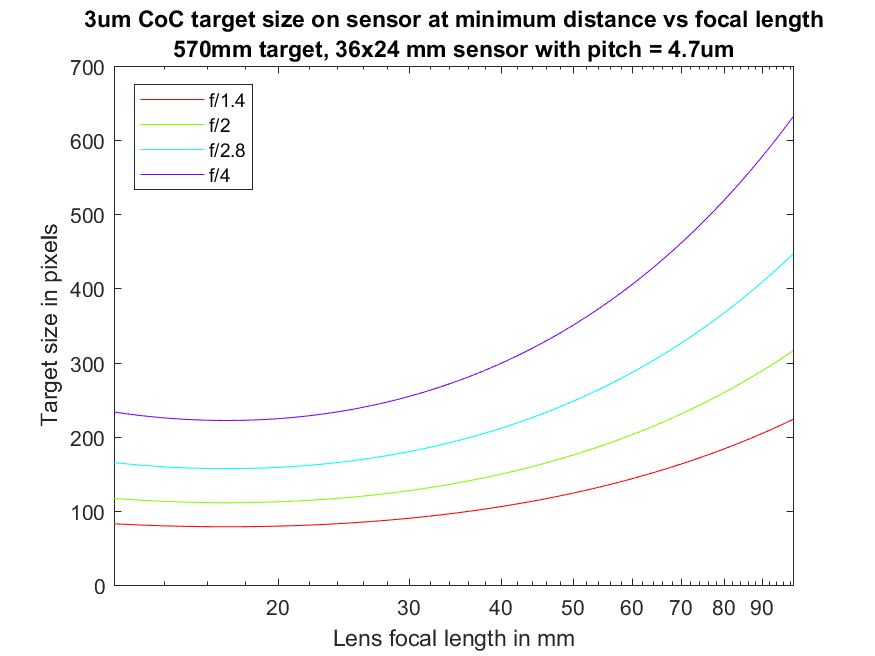
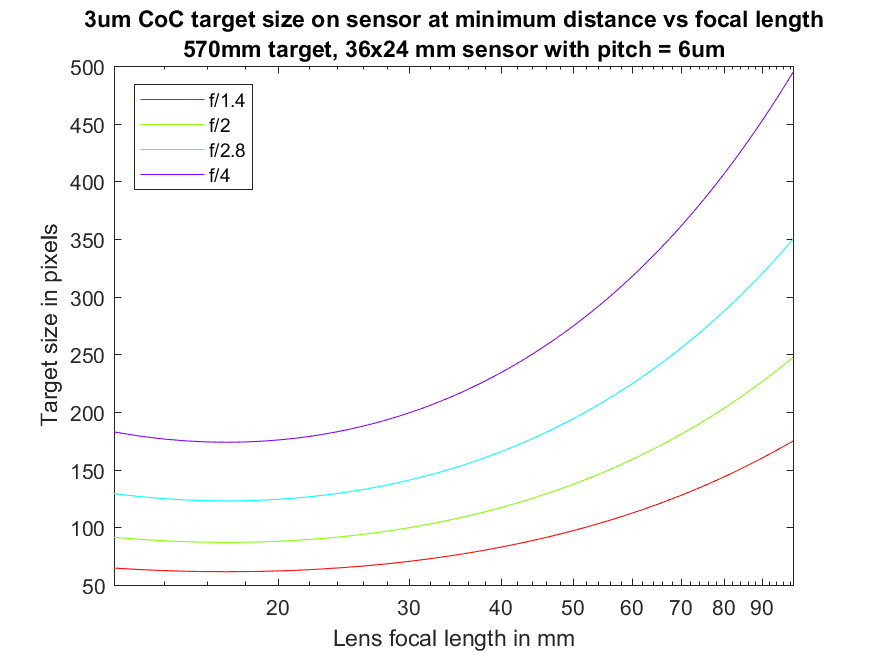
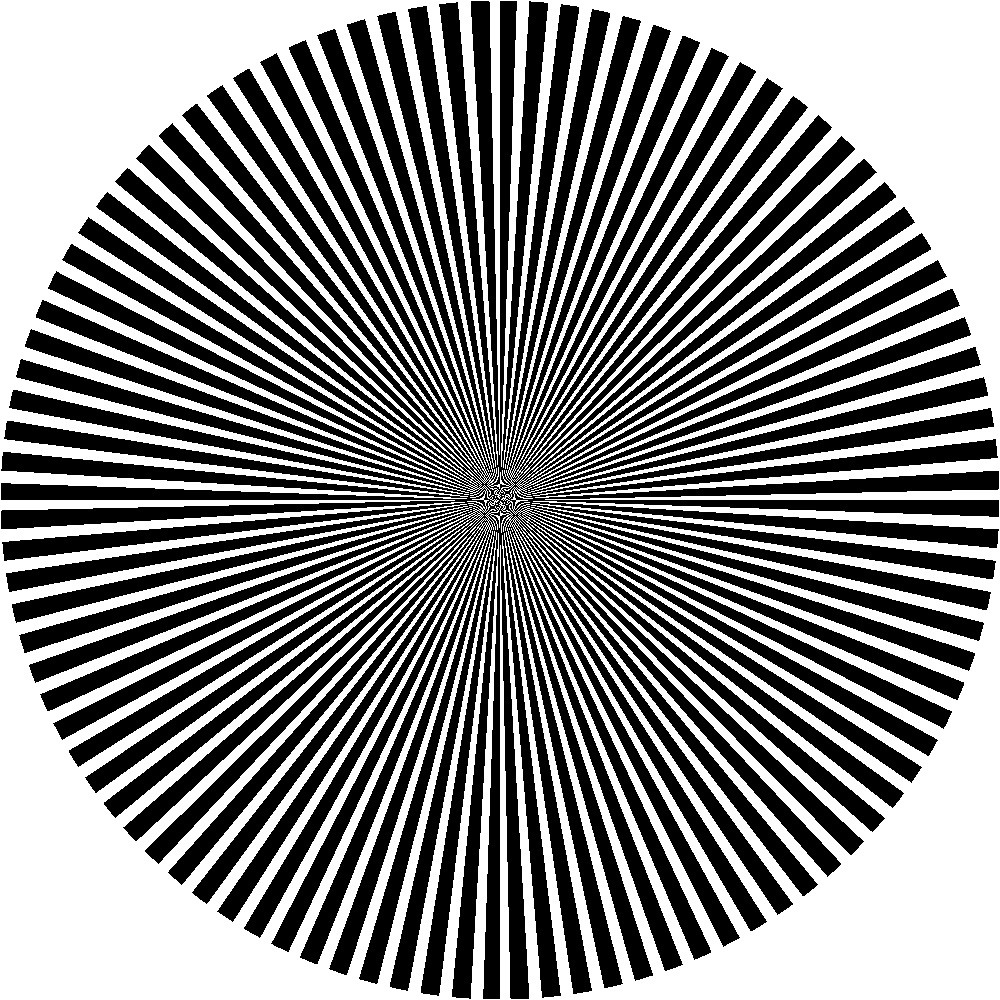
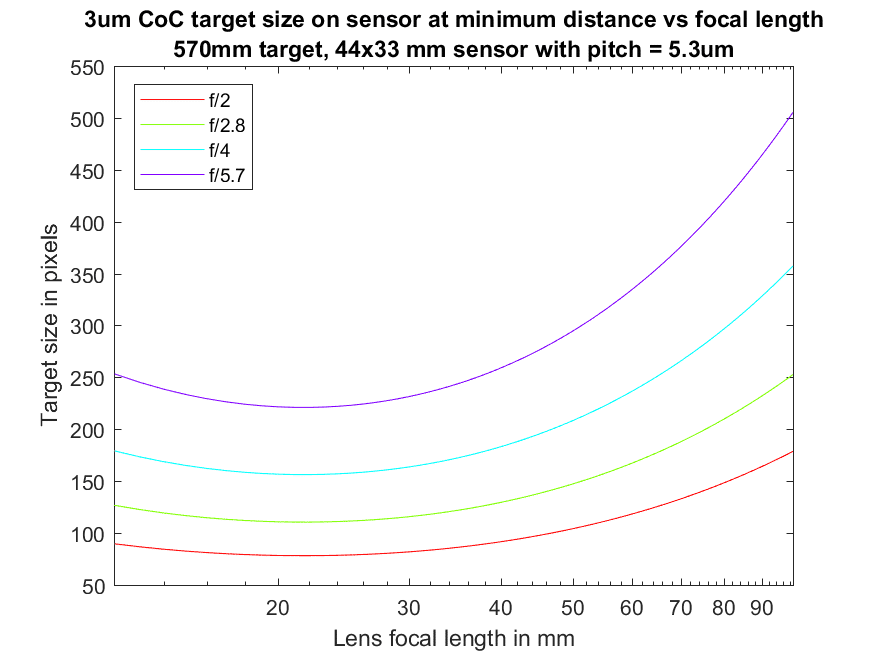
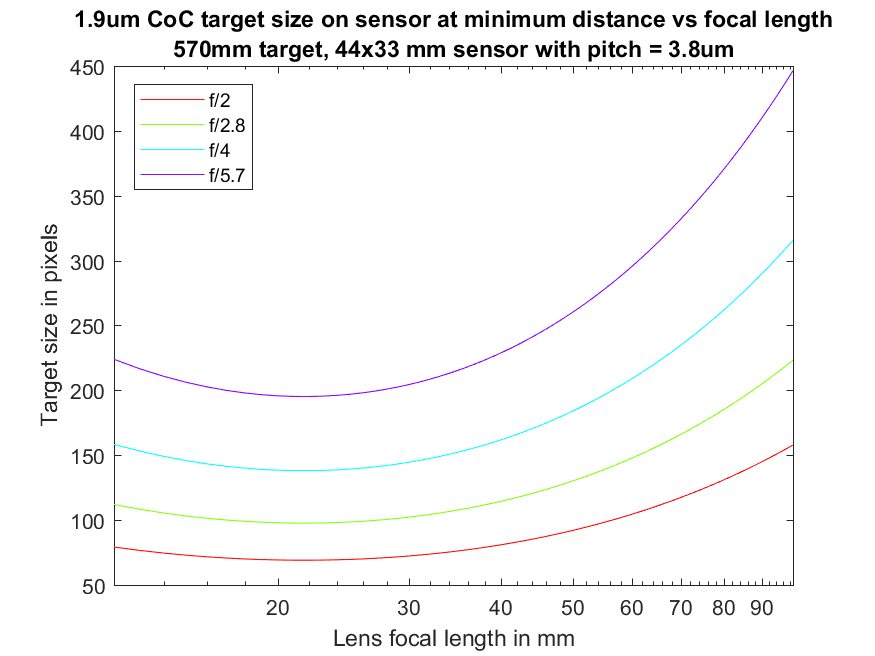
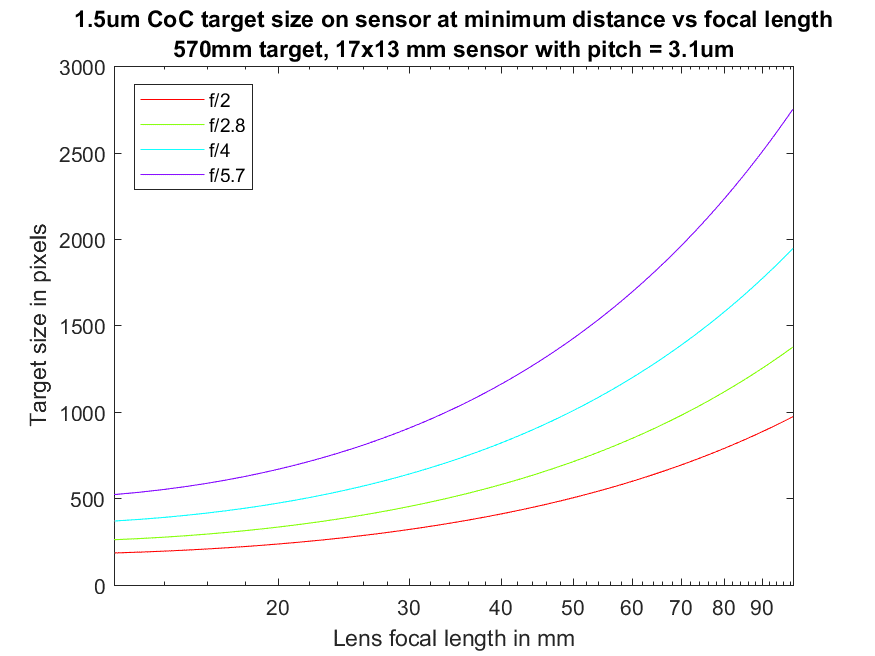
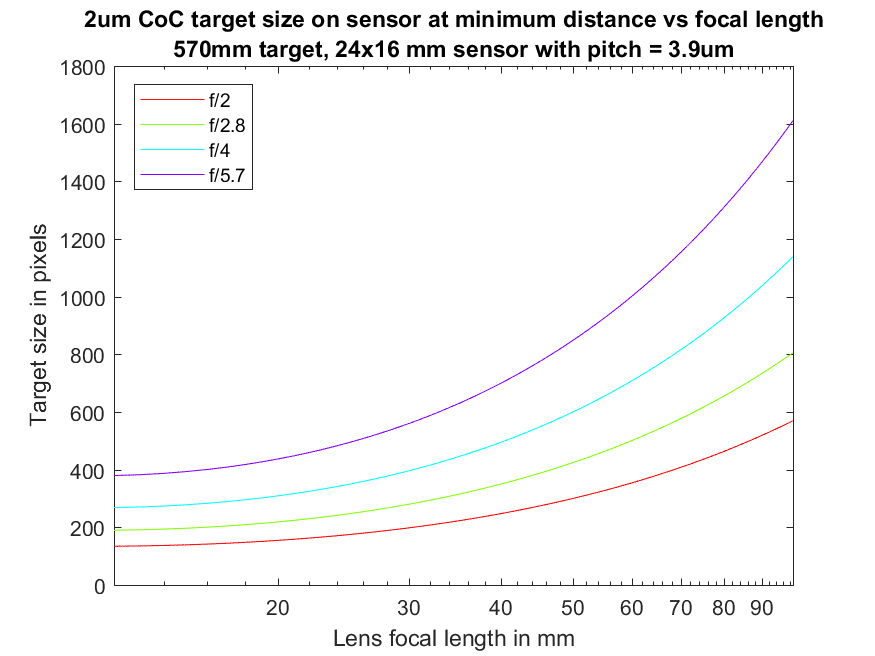
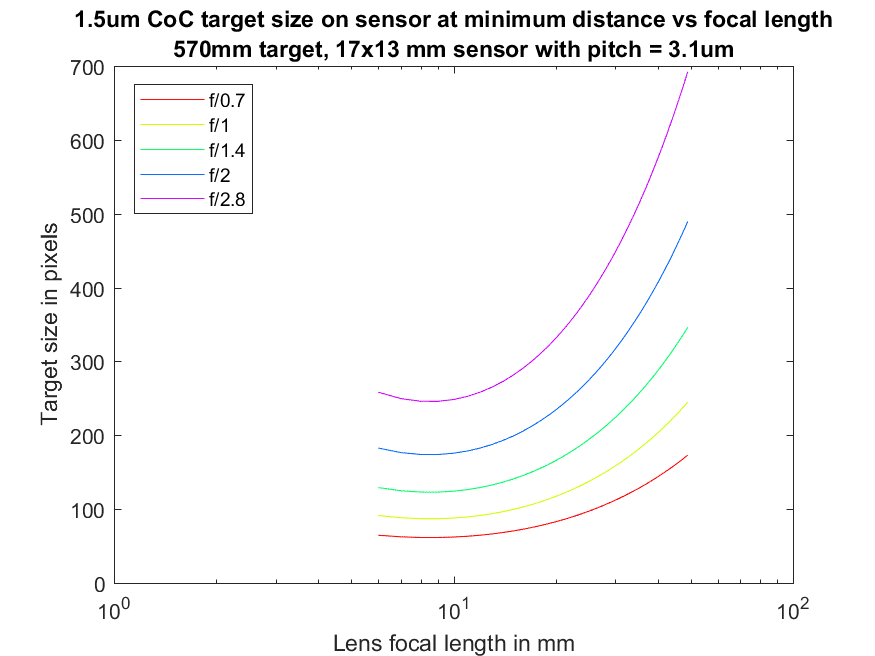
AndrewZ says
So a little off topic but I’ve had time to think about this test. I know you did some work showing the circle of confusion would be acceptable large enough to cover the difference in focus when switching from the centre to a corner but surely it would be easier to put two targets next to each other but one a small distance behind the first to account for the shifted focus? You could set up a quick formula where you input sensor size , focal length and aperture and it spits out target size (or range) and the target distance with the additional distance between the two targets. I wouldn’t worry too much about making one target size fit all as if you’ve spent the money to get a lens or camera that goes over the 570mm constraints you’ve probably not going to be to concerned about having to print out a bigger target.
JimK says
That’s an interesting idea, Andrew, and certainly doable, but it strays from the boundary conditions that I set for myself when I came up with this test methodology. You see, this all started when, I was struck by how hard it was to get people to follow the directions for the “simple decentering test” with the LED flashlight. I noticed that almost all the time (and maybe completely all the time) I could tell if they followed the directions or not by looking at the samples they sent me. So, when I came up with the Siemens Star test I’m working on now, I wanted a test that was a) simple to set up, and b) bore some evidence of improper setup in the resultant images. Having targets at two distances (one for the center, one for the corners) or four distances (center corners, short side long side) would require the user to measure the distance from the camera to the center target, consult tables, and arrange the other targets according to what she found in the tables. From my experience with the LED flashlight test, I don’t think many people would be able to do that correctly. And, if they didn’t that wouldn’t be evident in the results.
Sure, there are ways to blow the present test that don’t show up in the results, just not too many of them.
The advantages of the test you are proposing would be smaller targets and shorter camera-target distances. WRT the first, it turns out you can do most of the things you’d want to do with a single 16 inch or 22 inch star. WRT the second, I still think the distances you’d want to use would be great enough that you’d want to do the test outdoors, and then maybe distance isn’t such a problem.
I do like the way you think, though, and I may do some experiments with your idea.
Thanks.
Jim